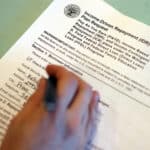Now that the federal student loan machinery has been set back into motion, hundreds of thousands of borrowers are discovering that their monthly payments had been miscalculated, often for higher amounts than they actually owed.
The mistakes have come to light as more than 28 million federal student loan borrowers returned to repayment this month after a pandemic-related relief program put their monthly bills on pause for nearly four years. (Here’s what financial advisors can recommend to clients.)
The miscalculations have affected borrowers being transferred into the Biden administration’s new income-driven repayment plan, known as SAVE, which bases borrowers’ monthly payment amount on their income and family size. The program promises to cut many borrowers’ payments by more than half compared with the program it replaced, called REPAYE, but at least one loan servicer hit a snag as it moved borrowers from the old program to the new one, which led to the wrong payment amounts.
The Missouri Higher Education Loan Authority, called MOHELA, used the 2022 poverty guidelines instead of 2023 to calculate the payments, which caused roughly 1%, or 280,000 borrowers, to be given “modestly higher” payment amounts than they should have had under the new SAVE plan. Borrowers were notified about their correct payment amount, according to the Education Department.
The Education Department also said it noticed discrepancies in some payment amounts as part of its standard review process last month, which led it to ask the loan servicers to audit their files regarding calculations made to family size, income or marital status. These mistakes caused some borrowers’ payments to be too high and a “very small number” of borrowers to be charged too little.
After it noticed the issues, the Education Department said, it immediately directed loan servicers to notify affected borrowers and put them into administrative forbearance until they were able to calculate the correct payment amounts.
A spokesperson for the Education Department estimated the two problems affected less than 1.5% of borrowers starting repayment, or roughly 420,000 people.
Borrowers who paid too much will be offered a refund.
People who want to ensure the accuracy of their payment amounts can use the loan simulator tool at StudentAid.gov, which should generate a close approximation of what they owe, but any discrepancies may take some time and perseverance to get fixed.
c.2023 The New York Times Company. This article originally appeared in The New York Times.







